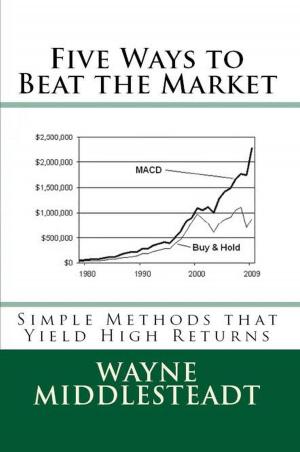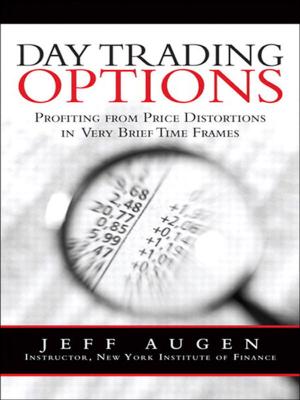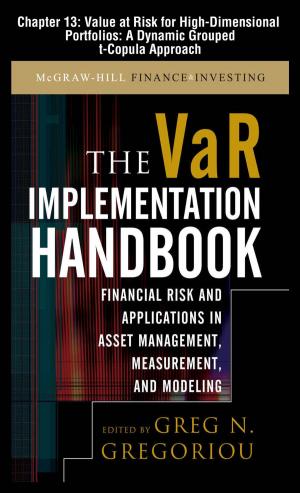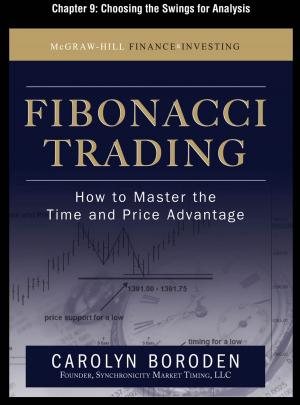Technical Analysis with Tactical Marking Strategy
Business & Finance, Finance & Investing, Investments & Securities| Author: | Ravi Patel | ISBN: | 9781370488964 |
| Publisher: | Ravi Patel | Publication: | October 25, 2016 |
| Imprint: | Smashwords Edition | Language: | English |
| Author: | Ravi Patel |
| ISBN: | 9781370488964 |
| Publisher: | Ravi Patel |
| Publication: | October 25, 2016 |
| Imprint: | Smashwords Edition |
| Language: | English |
You hold in your hand a book that has got the power to turn around your life positively forever. You must resolve to make the most of it by reading it thoroughly and applying it religiously in a systematic manner. Apart from the unique and versatile “Tactical marking Strategy”, the numerous insights mentioned in this book are gems that will prove to be priceless.
Tactical marking strategy is diverse in nature and is implemented through study of multiple time frames, so it tackles all the variations that occur on the chart and makes you enter at the right point from where the risk reward ratio is in your favor. You are able to identify and avoid entry during false price actions. You are able to know when the consolidation gets over so you get to enter at a point from where the true price action is seen in most cases.
With the help of “Tactical Marking Strategy” you are able to enter at the right time, hold the position without stress and exit at the right time.
It makes you exit from positions in profit in most cases, and even when a trade fails to move as expected, if you are in a small profit, it will make you exit with no-profit no-loss, so it means that once you are in profit, you are not allowed to come into a loss under ideal circumstances, unless it occurs due to a huge gap up or gap down. Most traders fail to act and exit, even when they are in profit. Due to lack of proper risk management skills they tend to come into loss from profit so they fail to remain profitable when they calculate the outcome over a period of time.
The word “Tactical” used for the system says it all. It means you take a calculated, prudent, strategic, judicious, skillful clever, smart approach when it comes to trading and investment. “Marking” is a process we do on charts at multiple levels to keep you aware about the transitions that occur in different time frames, so that you are able to enter at the right time when most of the conflicts are resolved. You have to do necessary markings on charts based on the criteria defined in the strategy that I will teach you in this book. These markings prove to be very crucial to make the most of the opportunities you get to trade and invest on a particular chart.
This is the best strategy in terms of making the most of the way the market moves. Static systems work with a very low success ratio in market. That is why single time frame based auto signals generating software’s are not able to deliver high success ratio. Many traders run after such automated systems only to get disappointed later. You must understand that a system implemented on single time frame fails to deliver high success ratio. Such software’s analyze charts only on single time frames. Markets move in a dynamic & varied manner, so we must employ a dynamic & a versatile system, only then we can make the most of it if it’s really good.
The beauty of my “Tactical marking Strategy” is that it makes continuous necessary adjustments to the changes that occur in market before providing you an entry trigger. This is a very crucial strength of the system. My Tactical marking strategy considers all these factors, so the success ratio his high.
You hold in your hand a book that has got the power to turn around your life positively forever. You must resolve to make the most of it by reading it thoroughly and applying it religiously in a systematic manner. Apart from the unique and versatile “Tactical marking Strategy”, the numerous insights mentioned in this book are gems that will prove to be priceless.
Tactical marking strategy is diverse in nature and is implemented through study of multiple time frames, so it tackles all the variations that occur on the chart and makes you enter at the right point from where the risk reward ratio is in your favor. You are able to identify and avoid entry during false price actions. You are able to know when the consolidation gets over so you get to enter at a point from where the true price action is seen in most cases.
With the help of “Tactical Marking Strategy” you are able to enter at the right time, hold the position without stress and exit at the right time.
It makes you exit from positions in profit in most cases, and even when a trade fails to move as expected, if you are in a small profit, it will make you exit with no-profit no-loss, so it means that once you are in profit, you are not allowed to come into a loss under ideal circumstances, unless it occurs due to a huge gap up or gap down. Most traders fail to act and exit, even when they are in profit. Due to lack of proper risk management skills they tend to come into loss from profit so they fail to remain profitable when they calculate the outcome over a period of time.
The word “Tactical” used for the system says it all. It means you take a calculated, prudent, strategic, judicious, skillful clever, smart approach when it comes to trading and investment. “Marking” is a process we do on charts at multiple levels to keep you aware about the transitions that occur in different time frames, so that you are able to enter at the right time when most of the conflicts are resolved. You have to do necessary markings on charts based on the criteria defined in the strategy that I will teach you in this book. These markings prove to be very crucial to make the most of the opportunities you get to trade and invest on a particular chart.
This is the best strategy in terms of making the most of the way the market moves. Static systems work with a very low success ratio in market. That is why single time frame based auto signals generating software’s are not able to deliver high success ratio. Many traders run after such automated systems only to get disappointed later. You must understand that a system implemented on single time frame fails to deliver high success ratio. Such software’s analyze charts only on single time frames. Markets move in a dynamic & varied manner, so we must employ a dynamic & a versatile system, only then we can make the most of it if it’s really good.
The beauty of my “Tactical marking Strategy” is that it makes continuous necessary adjustments to the changes that occur in market before providing you an entry trigger. This is a very crucial strength of the system. My Tactical marking strategy considers all these factors, so the success ratio his high.















